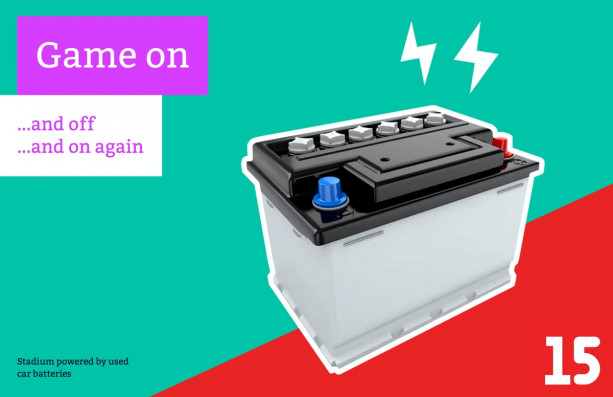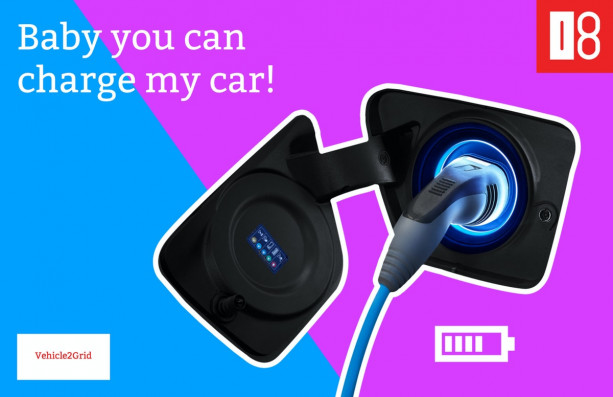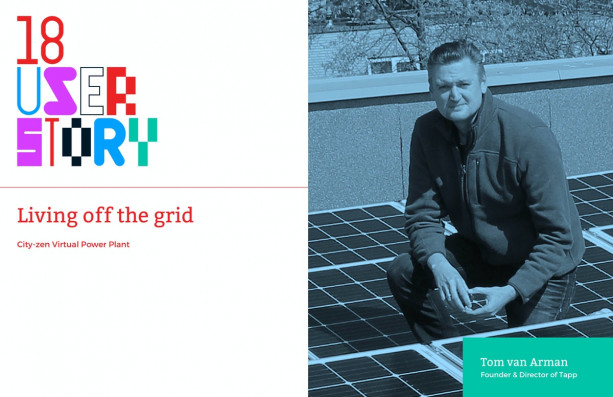Stay in the know on all smart updates of your favorite topics.
ATELIER - Positive Energy Districts

ATELIER is an EU funded project about AmsTErdam and BiLbao cItizen drivEn smaRt cities, aiming to create and replicate Positive Energy Districts (PEDs) within eight European cities. ATELIER showcases innovative solutions that integrate buildings with smart mobility and technologies to create rather than consume energy in its two Lighthouse Cities Amsterdam (Netherlands) and Bilbao (Spain). The Fellow Cities of ATELIER, Bratislava (Slovak Republic), Budapest (Hungary), Copenhagen (Denmark), Krakow (Poland), Matosinhos (Portugal), and Riga (Latvia), will replicate and adapt the successfully implemented solutions and thus serve as testbeds for future smart cities. Overall, ATELIER will thus generate an energy surplus of 1340 MWh of primary energy and save 1,7 kt of CO2 and 23 t of NOx-emissions.
To achieve successful implementations of energy saving measures, ATELIER puts citizens at the centre of all its activities: residents (<9000), local initiatives and energy communities will be included in decision-making processes and activities and will be strongly engaged in the development of the technical solutions throughout the project. Citizens will be involved in the Innovation Ateliers to create a maximum impact for the PEDs.
30 partners from 11 countries are working in 10 work packages.
Learn more about ATELIER at its public website (http://www.smartcity-atelier.eu/) or via the ATELIER Twitter and LinkedIn channels. Sign up here (link follows) for the ATELIER newsletter. Follow the project virtually and don’t miss an opportunity to come talk to its partners at events to learn more about how ATELIER will improve the life of its citizens and the liveability in its cities!
SESA project – Smart Energy Solutions for Africa to accelerate the green transition and energy access

Context
Africa is the fasted growing continent on the planet, measured both in GDP as in population, which historically is accompanied with a growth in energy consumption. With an eye on the Paris Agreement and COP26 it is clear the energy should be Low or even Zero Emission. However, it is important this does not stifle the economic growth allowing millions to climb out of poverty. With this in mind the EU funded the SESA project that aims at mitigating climate change while improving access to sustainable energy under affordable, reliable conditions.
Project brief
SESA is a four-year (2021-2025) EU H2020 funded R&D project designed to combine innovative energy access solutions for a range of applications in both urbanised and rural contexts in Africa. These solutions will include decentralised renewables (solar photovoltaics), innovative energy storage systems (including second life batteries), waste-to-energy systems (biomass to biogas), smart microgrids, (micro) mobility solutions, climate-proofing, resilience and adaptation, and rural internet access.
SESA focusses on testing, validating and replicating those energy innovations through co-developed demonstration actions in 9 sites across the continent (1 Living Lab for testing, 4 for validation and 4 for replication).
The collaborative project is the result of a strong partnership between leading European and African universities, research centres, industry actors, local governments, knowledge and implementation organizations and networks.
Objectives
The main goal of SESA is to support a diversity of affordable solutions that help provide access to reliable, affordable, and sustainable energy services for all, creating new business opportunities and developing concepts that can directly contribute to a low-carbon development. It further provides policy makers with recommendations aiming at creating a favourable regulatory environment to ensure long-term impacts of the solutions developed. In addition, a key deliverable for the project is the SESA Toolbox, which will contain materials relating to the following main building blocks:
- Impact assessment
- Capacity building
- Business plans and models
- Innovations tested in demonstration actions
- Design, operations and management for different solutions
- Financing & funding options
- Policy support
Cenex NL’s key contributions
Cenex NL leads the work package responsible for the development of the key repository of the project, the so called “SESA Toolbox”, and the evaluation of the project results available in the toolbox. Our team will be involved in three tasks:
- Build a scalable and harmonised toolbox for advanced implementation, management and operation strategies of efficient sustainable energy solutions.
- Develop an evaluation framework based on the Life Cycle Assessment (LCA) methodology to quantify and compare the environmental impacts of the proposed solutions.
- Assess the impact of the solutions developed in at least five the demonstration and validation projects using the framework developed in the previous task.
This project has received funding from the European Union’s Horizon 2020 research and innovation progamme under grant agreement No 101037141
CleanMobilEnergy – A Smart Energy Management System integrating renewable energy and electric vehicles.

Across North West Europe, cities are increasingly investing in renewable energy production and charging infrastructure for electric vehicles. However, the control systems for energy generation, energy utilisation, energy storage and electric vehicle charging work are currently separate from each other. This results in high costs and CO2 emissions due to energy inefficiencies.
Electric vehicles are mostly powered by fossil fuel generated electricity. At the same time, renewable energy is inefficiently utilised because production and demand are not synchronised across the city.

The project CleanMobilEnergy will integrate various renewable energy sources, storage devices, electric vehicles and optimisation of energy consumption through one unique smart energy management system. The development of this intelligent Energy Management System (iEMS) will increase the economic value of renewable energy and significantly reduce CO2 emissions.
The iEMS will assure the smart integration through interoperability based on open standards for data flows and analysis tools.CleanMobilEnergy will make it possible for renewable energy sources to be used locally, so electric vehicles can be charged with 100 % renewable energy offered at an optimum price. Electrical energy from the grid will only be required when prices are low or renewable energy sources are not available, the iEMS monitors and optimises the system 24hours a day, 7 days a week.

One generic transnational iEMS will be adapted to the 4 specific City Pilots, in Arnhem, London, Schwäbisch Gmünd and Nottingham. These pilots range from small towns to large cities. The 4 City pilots cover different types of renewable energy, storage and electric vehicles as well as different contexts and diverse city environments.
The City Pilots will utilise different state-of-the-art storage media in various environments, which are representative of North West Europe and are easily replicated in other cities across Europe. Specifically in London and Nottingham, for example, electric vehicles themselves will be used to power the buildings and depot by using innovative bi-directional chargers controlled by the integrated energy management system iEMS.
In Arnhem, on the other hand, renewable energy will be supplied to ships in the harbour adjacent to its industrial area. These pilots were chosen to represent a wide range of city sizes and environments, which are essential to developing a widely applicable system for future implementation across Europe.
Local Inclusive Future Energy (LIFE) City platform

Amsterdam Zuidoost will build a large amount of new homes in the near future. This will will demand more capacity from the electricity network. With an increasing demand the energy network either needs investments to expand the capacity of the network, or we can explore smart solutions in the field of energy management.
LIFE City Platform
Together with the expected expansions of the network, smart management of energy at area level can help prepare Amsterdam Zuidoost for the future, without unnecessary investments in the current energy grid. The LIFE platform offers users the opportunity to make choices about energy exchange or storage based on economic motivation, sustainability or to support the energy grid. Futhermore, the project ensures that the energy that is generated in Amsterdam Zuidoost - and not immediately used - can be stored locally, such as in the Johan Cruijff ArenA battery.
'Ditgital twin'
An important part of the LIFE platform is the development of a “digital twin”. This digital twin is a digital representation of the ArenApoort area, in which the relevant buildings and energy infrastructure are simulated. All kinds of experiments and adjustments can then be carried out in this digital twin, such as adjustments to electricity prices and rates and the integration of more sustainable energy generation. This allows smart area-based energy to be exchanged after the optimal mix has been calculated using measurement data and artificial intelligence.
Want to know more about this electricity grid-friendly and community inclusive innovation to contribute to the energy transition? Visit our website>>
Wicked Problems
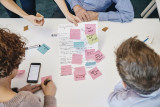
Te wicked? Niet voor ons.
Wij werken allemaal aan urgente, complexe, maatschappelijke uitdagingen. Issues die schier onoplosbaar lijken, van dilemma’s en paradoxen omgeven, nog niet duidelijk hoe het moet. Wel is duidelijk dát het moet, dat we elkaar nodig
hebben en dat we er NU aan moeten beginnen. Om met de woorden van Jan Rotmans te spreken; we leven niet in een tijdperk van verandering maar in een verandering van tijdperk. En hier hoort een nieuwe gereedschapskist bij.
En of je nou aan energietransitie werkt, andere mobiliteitssystemen, creëren van waterstofhubs, peer to peer autodeelsystemen, het maakt niet uit, we zien dat al deze opgaven op enig moment tegen gelijksoortige barrières aanlopen. Op samenwerking, financiering, privacy, onvoldoende aansluiting op de maatschappij, om maar een paar voorbeelden te noemen.
Unieke samenwerking
Als Amsterdam Smart City netwerk willen en kunnen we deze opgaven niet laten liggen. Door het bundelen van onze kennis en expertise kunnen we als netwerk iets unieks bieden en de wil en durf tonen om deze barrières te doorbreken. De betrokken partners die dit uitdenken en begeleiden zijn RHDHV, Kennisland, Drift, NEMO, Arcadis, Alliander, HvA en Metabolic. Zij bundelen hun expertise en ervaring om de echte vragen boven tafel te krijgen, tot nieuwe manieren van samenwerken te komen en barrières te doorbreken. We richten ons met name op de start van de samenwerking. Gezamenlijk ontwikkelen we een ‘wicked problem aanpak’. Op een nieuwe manier, lerend door te doen, exploratief.
Waar moet je aan denken?
Wat is eigenlijk het echte probleem? Wiens probleem is dit? Hoe kijken anderen er tegenaan? Welke andere partijen lijken nodig? Hoe vind je ze? Hoe ga je om met eigenaarschap en botsende frames? Hoe zorg je dat je al in
een vroeg stadium de maatschappij (bewoners, ondernemers, werknemers, etc) betrekt en hun ervaringen in het project trekt? Het wicked problem team zet nieuwe methoden in voor het beantwoorden van deze vragen. En het creëren van de benodigde commitment om het vraagstuk aan te pakken. Niets staat van te voren vast, want we passen ons aan aan wat we tegenkomen. Met elkaar ontwikkelen we een nieuwe aanpak om de barrières te doorbreken.
De energietransitie uitgelegd

De energietransitie is een van de belangrijkste maatschappelijke thema’s van dit moment en van de komende jaren. Maar wat ís de energietransitie? En wat zijn de specifieke doelen? Wat is het verschil tussen ‘energieneutraal’, ‘klimaatneutraal’ en ‘CO₂-neutraal’? Welke rol kan waterstof (niet) gaan spelen in de gebouwde omgeving van de toekomst? En hoe zitten ons huidige energieverbruik en energiesysteem in elkaar? Deze en andere vragen worden beantwoord in het boek ‘De energietransitie uitgelegd’. Ook komt aan de orde waar de uitdagingen liggen voor de energietransitie en hoe het energiesysteem er in 2050 ongeveer uit zal zien.
‘De energietransitie uitgelegd’ biedt alle basiskennis die nodig is om het nieuws omtrent de energietransitie kritisch te kunnen volgen en een gefundeerde mening te vormen in discussies over dit thema. Er is geen specifieke voorkennis nodig om het boek te kunnen lezen, maar het gaat op bepaalde onderwerpen wel diep in. Hierdoor is het boek interessant voor zowel energie-professionals als geïnteresseerde leken.
Nieuwsgierig geworden? Bestel het boek via uw boekhandel, bol.com of door het sturen van een email aan info@degroenewaterlelie.nl. Bij een afname van 10 of meer boeken ontvang je 5% korting (alleen bij bestellingen via email).
Het boek is gedrukt op boomvrij papier. Er zijn alleen bio-inkten gebruikt en er is gewerkt zonder schadelijke oplosmiddelen.
EC-Link Platform

You would like to connect with Urban Environmental Sustainability practitioners and researchers in China and exchange your approaches to green transport, clean energy, compact urban development, water and solid waste management, green buildings and municipal finance? Then sign up to the EC-Link platform! The platform links Eco Cities across Europe and China, offering inspiring examples from both sides of Eurasia and enabling direct contacts to the innovators. With the help of an integrated translation tool, posts can be translated into Chinese and English with just one click. Use of the platform is free of charge: http://eclink.org/bbs/#/?lang=en
A description of how the platform works can be downloaded here: http://eclink.org/ec_platform/upload/document/EC-Link_Users'%20Guide-EN.pdf
Globaliser Sustainable Solutions

As today's world presents us with a growing amount of global sustainability challenges, there is no going around the importance of building more sustainable solutions for the future. We are helping 8 sustainable solutions entrepreneurs with their internationalisation strategy and to help them achieve a global impact.
The Globaliser is a ten week programme for the international growth of Sustainable Solutions scale-ups.
You will build a solid internationalisation strategy with the use of DutchBasecamp’s tools, network and unique approach. The objective is to create a foundation, so you can channel your precious resources into unfamiliar territories with conviction.
What to expect?
Four sprints containing each a plenary session, specific homework and individual coaching by a seasoned entrepreneur.
After finishing you will have:
A validated international target market
A GTM strategy for that market
A solid international roadmap which will give you practical guidance on the next steps to take
Pavnext - technological pavements
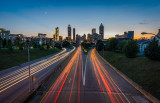
Pavnext´s solution consists of a road pavement equipment that allows kinetic energy to be extracted from vehicles and consequently reduce their motion speed without any action of the driver and without impacting the vehicle, thus promoting road safety at locations where it is required to circulate at low speed. The energy captured is then converted into electrical energy, which is produced without associated emissions and can be used in public street lighting, crosswalks, sensors, traffic lights, charging electric bicycles or even injected into the power grid. Additionally, Pavnext also provides real-time data regarding traffic and velocity, as well as generated and consumed energy, which are sent to the cloud and later used to generate reports and to optimize energy consumption in real time, promoting energy efficiency.
We are looking for new international partners that are interested in implementing pilot plants with us, to help us validate our product and reach TRL9. Please don´t hesitate to contact us if you´re interested.
Energy Innovation Blog
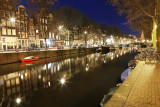
In a weekly blog the CTO Amsterdam presents technical and social innovation in the field of energy. By collecting new solutions we want to accelerate the energy transition in Amsterdam. We ask three questions: what is it, how does it contribute to the energy transition of Amsterdam and what is needed to implement the solution?
In een wekelijkse blog presenteert CTO Amsterdam technische en sociale innovatie op het gebied van energie. Door nieuwe oplossingen te verzamelen willen we de energietransitie in Amsterdam versnellen. We stellen drie vragen: wat is het, hoe draagt het bij aan de energietransitie van Amsterdam en wat is er nodig om de oplossing te implementeren?
Energy Storage System

Development and implementation of an Energy Storage System with different applications in a stadium that uses ‘second life’ batteries of Nissan Leaf cars, that generates revenue, cost savings and CO2 reduction.

Smart Stories
Check the article about the Energy Storage System featured in our online magazine 'Smart Stories':
CODALoop Amsterdam

CODALoop is a EU-funded research project and a joint venture of different academic and non-academic partners in three countries, The Netherlands, Austria and Turkey and four cities, Amsterdam, Graz, Leibnitz and Istanbul. CODALoop Amsterdam is active in two neighborhoods, the Indische Buurt and Buiksloterham.
There is a tremendous urgency to reduce energy consumption to guarantee quality of life for future generations. In the light of the weak results of behavioral approaches and top-down investments on infrastructures for energy efficiency, such as grid management, smart meters and the like, innovative approaches to tackle this issue are required. CODALoop Amsterdam is a research project which uses a sociological approach and explores the extent to which social interactions, at the level of the neighborhood, are able to activate ‘energy consciousness’.
Energiek Amstelveen
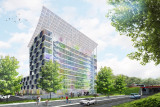
135 apartments 15 offices and 1 vegetarion restaurant all energy positive year around no fossil
Fuel used all with solar and wind energy including 5 mwh battery storage and 175 electric cars all connected in vehicle 2 grid solution off-gas with rainwater collecting tank for toilet and other uses
Private Ground Energy Systems in the Center
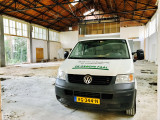
Will this be your next home?
City-zen: Vehicle2Grid

Vehicle2Grid technology stands for the possibility to use the battery of an electric vehicle to charge at times when there is congestion in the grid and to feed the electricity back to the grid at a later stage.
City-zen was an international consortium, a program stimulating learning-by-doing in Grenoble and Amsterdam between March 2014 and November 2019. The results can be found in a booklet or in detailed reports. http://www.cityzen-smartcity.eu/home/reporting/deliverables/
Smart Stories
Check the article about Vehicle to Grid featured in our online magazine 'Smart Stories':
City-zen: Dispatch and trading tool in Port of Amsterdam

Renewable energy supply – such as solar and wind power – is growing and the energy supply coming from gas fired power plants is decreasing.
City-zen was an international consortium, a program stimulating learning-by-doing in Grenoble and Amsterdam between March 2014 and November 2019. The results can be found in a booklet or in detailed reports. http://www.cityzen-smartcity.eu/home/reporting/deliverables/
Peakshaving at Blijburg

Sustainable & Cost Effective
Sustainable symbiosis between Art and Greenhouse

Sustainable symbiosis between Art and Greenhouse
For more information (in Dutch only):
or:
https://www.allianderdgo.nl/nl/case/duurzame-symbiose-tussen-kunst-en-kas-2
City-zen: Virtual Power Plant

Monetizing flexibility using a Virtual Power Plant, which incorporates solar-PV, load and home battery systems. It is not a real power plant but a virtual. Aggregating several small production units , like pv-rooftops, a power plant is created.
City-zen was an international consortium, a program stimulating learning-by-doing in Grenoble and Amsterdam between March 2014 and November 2019. The results can be found in a booklet or in detailed reports. http://www.cityzen-smartcity.eu/home/reporting/deliverables/
Smart Stories
Check the article about the Virtual Power Plant featured in our online magazine 'Smart Stories':
Self-sufficient Pampus

Reusing batteries could offer households and businesses throughout the Netherlands an affordable form of energy storage.
Stay up to date
Get notified about new updates, opportunities or events that match your interests.
